
The Vickers Viscount is a British medium-range turboprop airliner first flown in 1948 by Vickers-Armstrongs. A design requirement from the Brabazon Committee, it entered service in 1953 and was the first turboprop-powered airliner.
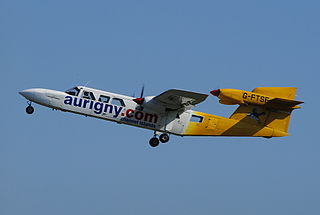
The Britten-Norman Trislander is an 18-seat three-engined piston-powered civilian utility aircraft produced in the 1970s and early 1980s by Britten-Norman of Britain. These STOL capable aircraft were produced on the Isle of Wight. They were also produced in Romania, and delivered via Belgium to Britain for their certification. A number of commuter airlines operated the Trislander in scheduled passenger services.

The Vickers Vanguard was a short/medium-range turboprop airliner designed and produced by the British aircraft manufacturer Vickers-Armstrongs.
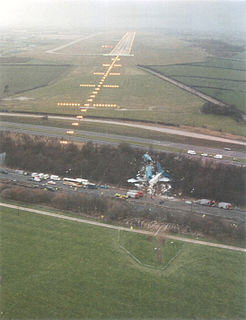
The Kegworth air disaster occurred when British Midland Airways Flight 092, a Boeing 737-400, crashed onto the motorway embankment between the M1 motorway and A453 road near Kegworth, Leicestershire, England, while attempting to make an emergency landing at East Midlands Airport on 8 January 1989.
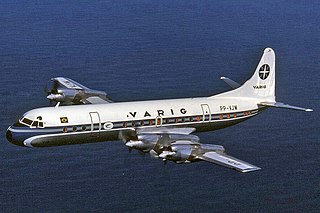
The Lockheed L-188 Electra is an American turboprop airliner built by Lockheed. First flown in 1957, it was the first large turboprop airliner built in the United States. Initial sales were good, but after two fatal crashes that led to expensive modifications to fix a design defect, no more were ordered. With its unique high power-to-weight ratio, huge propellers and very short wings, large Fowler flaps which significantly increased effective wing area when extended, and four-engined design, the airplane had airfield performance capabilities unmatched by many jet transport aircraft even today—particularly on short runways and high field elevations. Jet airliners soon supplanted turboprops for many purposes, and many Electras were modified as freighters. Some Electras are still being used in various roles into the 21st century. The airframe was also used as the basis for the Lockheed P-3 Orion maritime patrol aircraft.

The de Havilland Canada DHC-3 Otter is a single-engined, high-wing, propeller-driven, short take-off and landing (STOL) aircraft developed by de Havilland Canada. It was conceived to be capable of performing the same roles as the earlier and highly successful Beaver, including as a bush plane, but is overall a larger aircraft.
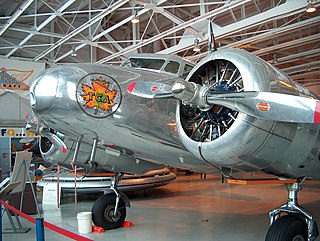
Trans-Canada Air Lines was a Canadian airline that operated as the country's flag carrier, with corporate headquarters in Montreal, Quebec. Its first president was Gordon Roy McGregor. Founded in 1937, it was renamed Air Canada in 1965.

The Mitsubishi MU-2 is a Japanese high-wing, twin-engine turboprop aircraft with a pressurized cabin manufactured by Mitsubishi Heavy Industries. It made its maiden flight in September 1963 and was produced until 1986. It is one of postwar Japan's most successful aircraft, with 704 manufactured in Japan and San Angelo, Texas, in the United States.
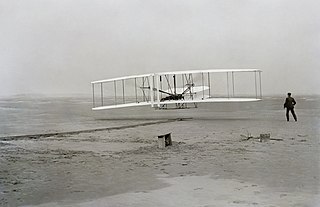
In an aircraft with a pusher configuration, the propeller(s) are mounted behind their respective engine(s). According to British aviation author Bill Gunston, a "pusher propeller" is one mounted behind the engine, so that the drive shaft is in compression in normal operation.

Capital Airlines Flight 20 was a U.S. scheduled passenger flight from Washington, D.C. to Norfolk, Virginia. A Vickers Viscount flying the route crashed into a farm in Charles City County, Virginia, on January 18, 1960. The accident was the fourth fatal crash involving a Capital Viscount in less than two years; the first three were Capital Airlines Flight 67, Capital Airlines Flight 300 and Capital Airlines Flight 75.

On 22 September 1966 a Vickers Viscount departed from Mount Isa, Queensland, Australia for a 73-minute flight to Longreach. Forty-four minutes after takeoff a fire started in one of the engines. The crew were unable to extinguish the fire or feather the propeller so made an emergency descent with the intention of landing at Winton, a small town along the route. The fire spread to the fuel tank and weakened the wing structure so that a large part of the left wing broke away and the aircraft crashed. All twenty-four occupants were killed. The accident remains the fifth-worst in Australia's civil aviation history.

On the evening of 30 November 1961, Ansett-ANA Flight 325, a service from Sydney to Canberra, Australia, operated by a Vickers Viscount propliner, broke up in mid-air and crashed shortly after takeoff, when it encountered a severe thunderstorm. All 15 people on board were killed.
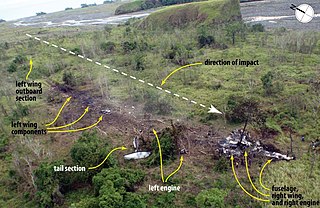
On 13 October 2011, Airlines PNG Flight 1600, a Dash 8 regional aircraft on a domestic flight from Lae to Madang, Papua New Guinea, crash-landed in a forested area near the mouth of the Gogol River, after losing all engine power. Only four of the 32 people on board survived. It was the deadliest plane crash in the history of Papua New Guinea.

Aeropesca Colombia Flight 221 was an internal scheduled passenger flight from Florencia Airport to Neiva Airport in Colombia. On 26 August 1981 it was being operated by a Vickers Viscount turboprop airliner registered in Colombia as HK-1320 when it collided with Mount Santa Elana, an Andean mountain peak, destroying the aircraft and killing all 50 on board.

TransAsia Airways Flight 235 was a TransAsia Airways domestic flight from Taipei to Kinmen (Quemoy), Taiwan. On 4 February 2015, the aircraft serving the flight, a 10-month-old ATR 72-600, crashed into the Keelung River shortly after takeoff from Taipei Songshan Airport, 5.4 km to the east of Songshan in Taiwan. The aircraft had 53 passengers and five crew on board; 15 of them survived.

Delta Air Lines Flight 1288 was a regularly scheduled flight from Pensacola, Florida, to Atlanta, Georgia. On July 6, 1996, the aircraft serving the flight, a McDonnell Douglas MD-88, was on takeoff roll from Runway 17 at Pensacola when it experienced an uncontained, catastrophic turbine engine failure that caused debris from the front compressor hub of the number one left engine to penetrate the left aft fuselage. The cause of the engine failure was judged to have been a fault in the manufacture of the fan, and failure of the airline to spot the resulting crack in the blade.

Reeve Aleutian Airways Flight 8 was an American domestic flight from Cold Bay, Alaska, to Seattle, Washington, on June 8, 1983. Shortly after takeoff, the Lockheed L-188 Electra of Reeve Aleutian Airways was travelling over the Pacific Ocean, when one of the propellers broke away from its engine and struck the fuselage, damaging the flight controls. The pilots were able to make a successful emergency landing at Anchorage International Airport; none of the 15 passengers and crew on board were injured in the incident.
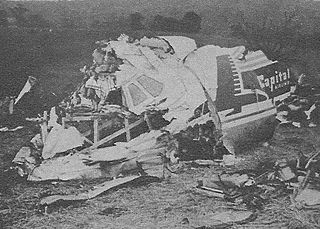
On May 20, 1958 a Vickers Viscount airliner operating Capital Airlines Flight 300 was involved in a mid-air collision with a United States Air Force T-33 jet trainer on a proficiency flight in the skies above Brunswick, Maryland. All 11 people on board the Viscount and one of the two crew in the T-33 were killed in the accident. Flight 300 was the second of four fatal crashes in the space of two years involving Capital Airlines Vickers Viscounts; the other were Capital Airlines Flight 67 Capital Airlines Flight 75 and Capital Airlines Flight 20.


















